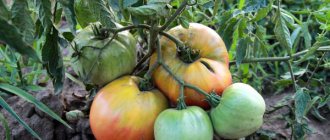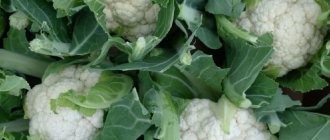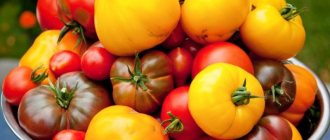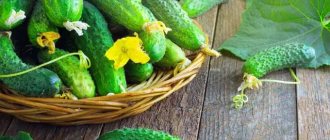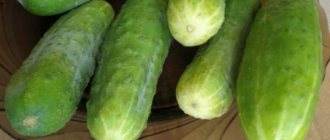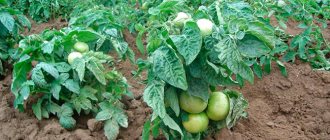Many domestic gardeners grow cauliflower on their plots. This vegetable is the main ingredient in a large number of dishes; it is great for pickling, pickling, and freezing. This species is also cultivated on an industrial scale, as it enjoys consistently high consumer demand.
In Germany, for example, cauliflower accounts for a tenth of all areas occupied for growing vegetable products
Breeders are constantly working to create new varieties of crops that do not require complex care and allow for high yields. The main directions of selection in this area, as well as the best varieties of cauliflower for open ground, will be discussed in the article.
Features of cultivation
Cauliflower is distinguished not only by its unusual appearance. It also has a special taste, for which many people love this vegetable. Before growing the selected variety, you need to know the basic care features.
As for the pros and cons of cauliflower, it is worth saying that gardeners who already have experience growing this crop unanimously claim that a short storage period can be considered a “conditional” disadvantage.
The best varieties of broccoli!
The best varieties of broccoli for Siberia, the Urals, the Moscow region and the middle zone.
The following care features are noted:
- Moderate, systematic watering. After the cabbage seedlings are transplanted to a permanent place of growth, the soil is moistened 3 times every 7 days. Gradually, as the bush develops, it is reduced to 2.
- Oddly enough, the culture does not like the loosening procedure. Its roots are located very close to the surface of the earth and there is a risk of damage. In addition, all the necessary substances and moisture reach them without additional effort. Mulching or moderate hilling is preferable. The material used is sawdust, peat or humus.
- During the growing season, cauliflower is fertilized 3 to 4 times. The very first one is carried out 14 days after planting the seedlings. They bring in mullein. Next one, after about 12 days. Organics can be diluted with minerals.
- It is important to strictly follow all the rules of agricultural technology so that cabbage has good immunity. Otherwise, diseases and pest damage are possible.
Important!
Growing cauliflower will require significantly more effort than growing cabbage.
GROWING CAULIFLOWER FROM SEED TO HARVEST - video
Greens or vegetables - types that look like grass
When you see some varieties of cabbage, you might mistake them for grass. The unusual shape gives only an external difference from the usual heads of cabbage, and all the “cabbage” features are characteristic of such original species.
Chinese cabbage
This variety of crop does not form a head of cabbage or a root crop. It's more like a salad than traditional cabbage. The State Register of Breeding Achievements identifies it as a separate species and recommends 17 different varieties for cultivation. Chinese cabbage (or pak choi) is a vegetable crop consisting of elongated oval, bright green leaves on thick petioles.
Pak choy is harvested throughout the season, before frost.
The main advantage of Chinese cabbage is its early ripening. Its early varieties have a very short growing season: literally a month after planting, the leaves and petioles of the plant can be eaten. At the same time, the vegetable does not make any special demands on soil fertility and temperature conditions.
Another important virtue of culture is usefulness. It contains a huge list of vitamins, microelements such as phosphorus, iron, potassium, calcium, sodium and magnesium. Chinese cabbage is especially valuable because it contains a large amount of lysine, which helps cleanse the blood. In China, this vegetable is considered a source of longevity.
Chinese cabbage greens are not stored for a long time, so it is better to use them immediately for cooking.
China leaves will be tender, juicy and extremely tasty if they are removed in time, avoiding yellowing. Leaves no longer than 25–30 cm in length are considered ideal for harvesting. They are used in borscht, salads, and are excellent for making cabbage rolls. Cabbage petioles, which make up almost half of the vegetable, are also eaten.
Latest entries Lilac perennials that are beautiful, compact and do not crowd out other plants Why when buying seedlings you should not take the sellers’ word for it and how to determine the age of the plant using 3 signs Tomato seedlings have become purple or whitish: why the color has changed and how to save the plants
Unusual kale
Kale does not form a head. Its beautiful, carved and long leaves can be of varying degrees of curl and different colors - from green to dark purple. The height of the plant depends on the variety and ranges from 30 to 90 cm.
This variety of cabbage is grown for various purposes. Someone decorates their plot with it - after all, the decorative properties of kale are noted in the State Register of Breeding Achievements. This species also has high nutritional qualities. Cabbage leaves are added to salads, they can be stewed with meat, used as a side dish, salted, pickled, baked, or used as a filling for pies. The young leaves of the plant are especially tasty. The petioles and central veins of an adult vegetable become rough and fibrous.
Two varieties of kale are included in the State Register:
- Redbor;
- Reflex.
Popular varieties also include red and green kale. All varieties of kale tolerate low temperatures well - plants do not die even at -15 degrees. After exposure to frost, the leaves become sweeter and more aromatic.
Cabbage leaves go well with onions, tomatoes, dill, parsley
Exotic Japanese cabbage
Japanese cabbage is widespread in its homeland just like white cabbage in our country. This is a leaf type cabbage and does not form inflorescences. Its corrugated or smooth leaves have torn edges and are heavily dissected. Externally, the plant does not look at all like cabbage, but judging by how quickly the main cabbage pest, the cruciferous flea beetle, finds it, there is no doubt that the spreading leafy bush presented below belongs to the cabbage family.
Even a novice gardener can grow Japanese cabbage, as it is unpretentious, heat- and cold-resistant
Japanese cabbage is a rare guest in our beds. But it deserves the attention of gardeners both for its decorativeness and usefulness. The culture is classified as a dietary product recommended for the prevention and treatment of cardiovascular diseases and diseases of the gastrointestinal tract. Since the plant has early ripening periods, it can be actively used for spring vitamin deficiency.
Japanese can be added to salads, stewed with other vegetables, and used in making soups. Its unusual leaves can serve as the basis and decoration for sandwiches.
How to choose the right variety
The choice is based on the main criterion:
the climatic conditions of the growing location.
For example, in the north, summer is short, and therefore ultra-early varieties of cauliflower are ideal. For the middle band, it is worth giving preference to medium-term ones. However, early and late will do. The culture loves moisture and moderate temperatures. Cauliflower seeds are sown in late March to produce seedlings in April. You can plant seeds directly into the greenhouse.
The problem of cobalt and boron deficiency is quite common. For this reason, the head of cabbage may not set. To avoid this, appropriate microelements are added during the formation of inflorescences.
Attention!
It is important to feed the plants on time. If you are late, flowering may begin prematurely.
To increase the fruiting period, seeds are sown at different times, keeping an interval between sowings of 7 - 14 days. Alternatively, you can additionally sow directly into the ground in the summer.
The best varieties of cauliflower: tasty and productive
Taste and yield are the main characteristics that are important when choosing a particular variety.
The best varieties and hybrids of cauliflower: from the earliest to the latest - video
Cauliflower "Matin"
A French hybrid with a vertical rosette of leaves with wavy edges. The head itself is dense, with medium tubercles. Ellipse shape. The color of the fruit is delicate cream. Despite their hardness, they have tender flesh. The weight of one copy is from 1 to 1.4 kg. The yield is 4.2 kg per 1 m2.
Photo of cauliflower
Cauliflower variety "White Castle"
Russian variety. It is distinguished by foliage with a slight coating of wax. The head of cabbage is spherical in shape, not covered with leaves. Color white. The weight of one fruit is approximately 1.7 kg. This variety of cauliflower has a good taste. From 1 m2 a harvest of 4.3 kg is harvested.
Cauliflower "Barcelona"
Dutch cabbage with medium-sized leaves. The color is greenish-gray. There is blistering on the leaf blade. The head itself is quite large. Weight 1.2 kg. The shape is round and slightly flattened. The fruit is firm, white in color. The yield is 5.5 kg per 1 m2.
Fargo cauliflower
A frequent visitor to Russian gardens. The rosette is formed by green-blue leaves. The blistering is clearly visible. The fruit is elliptical in shape. The color is slightly yellow. The tuberosity is very pronounced. The weight of one head of cabbage is 1.5 kg. It has excellent taste characteristics. 'Fargo' is a good variety of cauliflower to sell due to its beautiful appearance and high yield. From 1 m2 you get up to 5.5 kg.
Cauliflower variety Fargo - photo
Cauliflower variety "Whitexel"
It is represented by a compact shrub with a simple green leaf. There is slight wavy along the edges. The size of the head can vary from medium to large. Its shape is round and slightly flattened, dense. Has a white color. The weight of the fruit reaches 2.5 g. Many rate its taste as “excellent” on a 5-point scale. The yield is average - about 4.6 kg.
Stargate Cauliflower
High-yielding variety of cauliflower of Dutch origin. The leaves are medium or small. Green color. There is some blistering. The edges are wavy. The fruit size is average. Weight approximately 1.8 kg. The color of the heads of cabbage is white. There is slight tuberculation. 7 kg are collected from 1 m2.
Snowball
It’s not for nothing that cabbage got its name, characterized by a truly snow-white hue, while being small in size. The average weight of cabbage reaches 850 grams. Dense planting and compactness of the bushes ensures high yields, especially since there is no need for space for branching.
Early ripening cabbage is the best variety that has gained popularity among many gardeners. The advantage of the product is increased resistance to diseases. The rapid ripening period allows you to harvest several times in one season. From the moment the seedlings are planted until they fully mature, it takes about 2 months.
Early varieties of cauliflower
Early varieties of cauliflower are good for greenhouse cultivation. However, in areas with a warm climate, it can also be grown in open beds. The best early ripening varieties of cauliflower are presented below.
Cauliflower variety "Vinson F1"
Hybrid with short ripening periods. Suitable for small-scale farming. Suitable for any area of the country. The heads of cabbage are round with a vertical rosette of leaves. There is a bumpiness on the fruits. Weight from 1.5 to 1.8 kg. In some cases there may be fruits weighing 3 kg. The color is bright white. The pulp is tender and has a wonderful taste. Resistant to drought and heat. The number of ripe heads of cabbage per 1 m2 is 5.8 kg.
Early variety of cauliflower Vinson - photo
Cauliflower variety "Koza-Dereza"
Ultra-early varieties of cauliflower for growing anywhere in the country. It can be successfully cultivated both in open and closed ground. The heads of cabbage are compact, round, with some tuberosity. Weight up to 800 gr. The pulp is juicy. This variety needs to be protected from sunlight to get a good harvest. All fruits ripen at the same time and are of the same size. Productivity is at an average level: 3.2 kg per 1 m2.
flora blanca
A mid-season variety of cauliflower, dominated by rounded-flattened white inflorescences with a creamy tint. The growing season is 109-112 days. The average weight of one head is 1.2 kilograms.
The fruits are tightly covered with leaves, so the heads are reliably protected from the scorching rays of the sun, which can cause black spots and a bitter taste. Germination and ripening are consistent, which means harvesting will be almost simultaneous.
A distance of 50 centimeters and 70 centimeters is maintained between bushes and row spacing. Cabbage is highly resistant to bacteriosis and cold, and does not lose its taste for a long time if stored correctly.
Late varieties of cauliflower
Along with early-ripening varieties, there are also late-ripening varieties of cauliflower. They are preferably grown in Central and central Russia.
Cauliflower "Amerigo F1"
Large hybrid. Fruit weight is from 2 to 2.5 kg. Forms very slowly. The harvest is harvested only 2.5 - 3 months after germination. It is distinguished by snow-white and massive heads of cabbage. He has excellent immunity. Pests and viruses are avoided. Requires close care. Productivity is up to 8 kg per 1 m2.
Cauliflower variety "Incline F1"
The variety was obtained in Japan. This late cauliflower is suitable for growing throughout Russian territory. It has a raised rosette with huge leaves. The shape of the heads of cabbage is oblong. Average weight is about 600 g.
In particularly favorable conditions and good care, the heads of cabbage grow up to 1.2 - 1.5 kg. Fruits are able to form even in not very favorable weather. From 7 to 10 kg of crop is harvested from 1 m2.
Cauliflower variety "Skywalker F1" (Holland, 2003)
A late foreign hybrid originally from Holland. It is equally good for both open and closed ground. In any area it is necessary to ensure full ripening of the fruit. It has a vertical rosette with narrow leaves.
Late cauliflower variety Skywalker - photo
The weight of the head of cabbage ranges from 1.5 to 3 kg. Perfect for fresh use and freezing. Harvest from 4 to 6 kg per 1 m2.
Cauliflower variety "Asterix F1"
Medium-fruited hybrid with dark green leaves. Fruit weight up to 900 g. It has been grown for two decades. It especially stands out for its excellent taste and good immunity. It has a low yield of 2.3 kg.
Cauliflower "Cortes F1"
This hybrid is mainly grown for sale. Its fruits are very beautiful. The weight of one varies from 2 to 3 kg. The variety is self-covering. It requires systematic feeding, as the soil must be nutritious. Excellent yield from 5 to 7 kg per 1 m2.
The largest cauliflower
The size of the heads of cabbage matters for some vegetable growers. Here are some of the largest representatives of cauliflower.
Cauliflower "Agnia"
A variety obtained by Russian breeders specifically for winter sowing. The first fruits ripen by mid-summer. The fruits are round, slightly flattened, white. The pulp is tender and juicy.
Photo of cauliflower Agnia
The average weight of one head of cabbage is 1.5 kg. And this is not the limit. Green leaves protect the fruits from the bright sun. Suitable for commercial cultivation. The yield, however, is low, approximately 2.5 k per 1 m2. This is one of the best varieties for the middle zone.
Cauliflower variety "Prudentia"
A modern hybrid from Holland. It has been grown in Russia relatively recently, since 2022. Its fruits are spherical and slightly flat. Fruit weight from 2.3 kg. This variety of cauliflower has a pleasant taste. The heads are white. This is the most productive cauliflower. From 1 m2 – up to 11.5 kg.
Variety of large cauliflower Prudentia - photo
Cauliflower "Ferraro"
Dutchman of medium maturity. Recommended for cultivation throughout the country. Its heads are covered with greenish-gray leaves. The shape of the fruit is a wide ellipse. Milky color. At the stage of full maturity, the weight ranges from 2 to 2.3 kg. Up to 8 kg of tasty heads of cabbage are harvested from 1 m2.
Cauliflower "Fortaleza"
It stands out for its large fruits weighing from 2.8 kg. There is a bump on the surface. The shape is round. This cauliflower is self-closing. The heads of cabbage are white, and the leaves covering it are green with a gray tint. There is some blistering. The taste is soft and delicate. The yield is 5 kg per 1 m2.
Movir 74
This type of cabbage was developed in 1965 and is becoming more in demand every year. Grown in the Russian Federation.
Kamensky and 5 more elite potato varieties that are worth paying attention to
A small, compact plant with a diameter of up to 75 cm. Bright green leaves reach 60–75 cm. The heads are yellowish, covered with tubercles. Diameter is within 15–25 cm, fruit weight when ripe is 400–1400 g. The taste is delicate and pleasant. Productivity - 6–8 kg/m2.
Advantages:
- excellent tasting fruits;
- cultivation - 2 times a year;
- resistance to frost and hot weather conditions.
Flaws:
- instability to viruses and fungi.
Used for preparing side dishes. Consumed raw.
Varieties of cauliflower for the Moscow region and the middle zone
Among the many created varieties and hybrids, there are those that are actively grown in the Moscow region and the middle zone.
Cauliflower variety "Snow Globe"
Early ripening, one of the most popular varieties of cauliflower. Its fruits are firm and beautiful, white in color. The shape is round. The weight of one head of cabbage is from 650 to 850 kg. If all rules are strictly followed, agricultural techniques can grow up to 1.2 kg. This variety of cauliflower is suitable for preparing a variety of culinary dishes. Great taste. Productivity from 4 kg per 1 m2.
Cauliflower "Express"
Another ultra-early representative. It ripens already on the 55th day after planting at a permanent place of growth. Its fruits are small. Weighing up to 350 g. The color of the fruit is light yellow. Inflorescences are well developed. The shape of the heads of cabbage is round. From 1 m2 they get a small harvest of up to 3 kg.
Cauliflower variety "Flora Blanca"
It stands out for its decorative appearance. This variety is quite capable of decorating a site. Ripens on the 105th day after germination. The weight of the fetus is up to 1.2 kg. The heads of cabbage are dense. Color white with yellow. The taste characteristics are excellent. 1 m2 of planting can yield 2.5 kg of cauliflower.
General characteristics of the plant
Cauliflower is an annual plant from the Brassica family, native to the Mediterranean coast. The head for which it is grown is not a fruit or a head (a modified shoot with leaves tightly adjacent to each other), but an inflorescence . It is formed at the top of the stem from shortened peduncles and is not only white, but also beige, yellow, orange, green, purple; may have a round, flat, round-flat or cone-shaped shape. As a rule, the rosette consists of 15-20 well-developed outer leaves, and many small underdeveloped leaves are formed around the head.
The outer leaves are also quite edible - they are used to prepare soups, cabbage rolls and other dishes
Varieties are usually divided according to ripening time : early varieties begin to be harvested 75-80 days after the appearance of friendly shoots, and late ones - after about 150 days.
The vegetable has high taste qualities, is valued not only for its ability to diversify the diet, but also as a product of dietary and therapeutic nutrition: it has low calorie content (25 kcal per 100 g) and is an excellent source of biologically active substances. For example, there is 2-3 times more vitamin C in cauliflower than in white cabbage heads.
In the table we have collected data on the vitamins and microelements necessary for the human body, which are contained in significant quantities in cabbage inflorescences:
| Useful material | Content per 100 g of fresh product | Share of the daily value of an adult, % |
| Vitamins | ||
| Ascorbic acid (C) | 48.2 mg | 58 |
| Phylloquinone (K) | 15.5 mcg | 15 |
| Folic acid (B9) | 57 mcg | 14 |
| Pyridoxine (B6) | 0.18 mg | 14 |
| Pantothenic acid (B5) | 0.67 mg | 13 |
| Riboflavin (B2) | 0.06 mg | 5 |
| Minerals | ||
| Manganese | 0.155 mg | 7 |
| Potassium | 299 mg | 6 |
| Phosphorus | 44 mg | 6 |
Some of the nutrients are destroyed during heat treatment, so it should be as fast as possible
Dutch varieties of cauliflower
Holland is the leader in the number of bred varieties and hybrids of cauliflower. They are also successfully grown in Russia. As a rule, they are easy to care for and can grow in unfavorable conditions.
Cauliflower "Artost F1"
Large-fruited hybrid. Ripens on the 70th day. The weight of one round head of cabbage varies from 2 to 3 kg. Tolerates heat. Can be stored for no more than 7 days. From 1 m2 they collect from 4.5 to 5 kg. Suitable for processing.
Cauliflower variety "Bronco F1"
Hybrid of cauliflower from Holland with medium ripening period. Suitable for both professional and amateur cultivation. The heads of cabbage are large, round in shape. They taste great.
Photo of cauliflower Bronco
Suitable for use in raw form, as well as in blanks. Withstands heat and lack of moisture well. Productivity ranges from 5 to 8 kg per 1 m2.
Cauliflower "Cambria F1"
White spherical inflorescences are elastic and dense. Painted white with a hint of light green. They can develop well both in open ground and in greenhouses. The weight of the fetus is about 2.5 kg. Perfectly stored. Not subject to cracking. Suitable for commercial cultivation. Productivity up to 4.5 kg.
Cauliflower "Tiara F1"
Very early ripening hybrid. The first fruits are harvested on the 55th – 60th day after germination. All heads of cabbage are round and white. One weight is 2 kg. The taste is excellent. Resistant to adverse environmental factors. Grows well in low light conditions. Perfectly stored. Very high yield up to 15 kg per 1 m2.
Cauliflower varieties for the Urals
There are especially recommended varieties for the Ural territory. Among them:
Purple Ball, Amphora, Bruce and Guarantee. These varieties of cauliflower are perfect for the Leningrad region.
Cauliflower “Lilac Ball”
Fully ripened fruits can be harvested already on the 55th day after germination. It can easily withstand bad weather and even frost, including sudden temperature changes. The color of the heads of cabbage is deep purple. The shape is round and slightly flat. Weight up to 1.5 kg. 1 m2 ripens from 4 to 5 kg of tasty cabbage.
Variegated cauliflower - varieties
There are varieties of cauliflower that have unusual colored heads; they are classified as multi-colored.
Cauliflower "Yarik F1" orange
The hybrid ripens on the 65th day. It has excellent quality and taste. The heads of cabbage are of an unusual orange color. Very impressive landings. The average fruit weight is from 300 to 500 g. Even after heat treatment they retain their delicate taste and texture. From 1 m2 you get up to 2.5 kg.
Cauliflower "Orange cheese F1" yellow
It has excellent taste and bright yellow heads with a hint of orange. The crop is harvested from the 70th day after germination. Inflorescences are the same size, round, with a smooth surface. Fruit size up to 2 kg. From 1 m2 you get up to 3 kg of tasty heads of cabbage.
Good varieties of cabbage:
Broccoli FIESTA Kohlrabi GIANT Broccoli TONUS
Cauliflower variety "Amethyst F1" purple color
Mid-term hybrid. The first harvest appears on the 75th day after planting the seedlings. The weight of the head of cabbage ranges from 1.2 to 1.8 kg. The color of the fruit is rich purple. Resistant to drought and heat. The harvest is up to 5 kg per 1 m2.
Photo of cauliflower variety “Amethyst F1”
Cauliflower "Maserata green"
The fruits of this cauliflower have an interesting light green-yellow hue. They look very impressive both in plantings and in various culinary dishes. Mid-season variety. It takes 140 to 150 days for the fruits to form and are ready for harvest. The fruits are round and flat. Weight from 1.4 to 1.6 kg. The heads ripen together. The yield indicators are constant - 5.6 kg per 1 m2.
Planting cauliflower in the garden is an excellent choice. Before this, it is worth carrying out a careful selection, based on the main characteristics of cauliflower varieties, as well as specific climatic conditions. Choosing the right variety is the key to getting a good harvest.
Dereza goat
This is a medium ripe variety. It is distinguished by its compactness and white head, with a predominant yellowish and sometimes reddish tint. The upright plant bears fruits whose average weight is 800 grams, and with proper care can exceed 2 kilograms.
The growing season of the plant is 53-70 days. The seedlings germinate well and develop well. Shoots can be planted from the second half of April to mid-July. When planting, there are 4 plants per 1 square meter. This cabbage variety is very demanding on soil composition. When planting, it is important not to forget about fertilizers and fertilizing.
